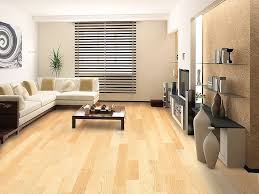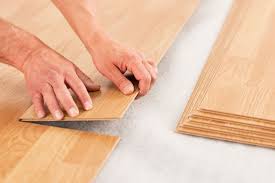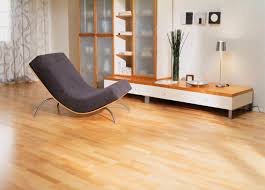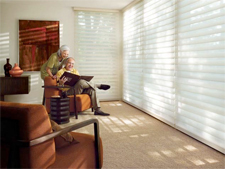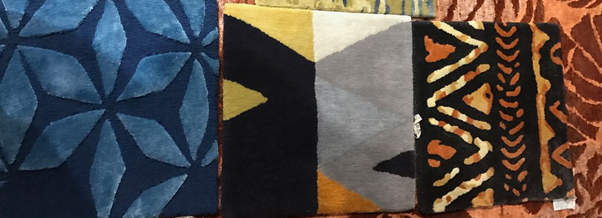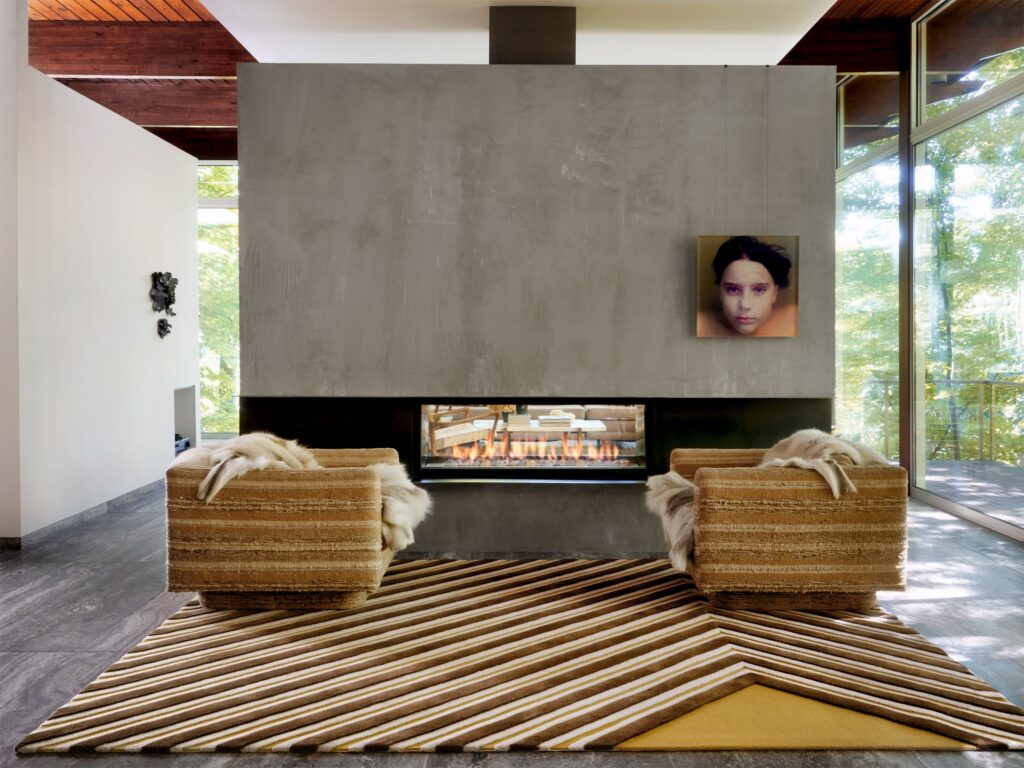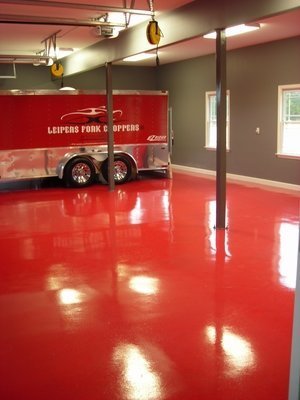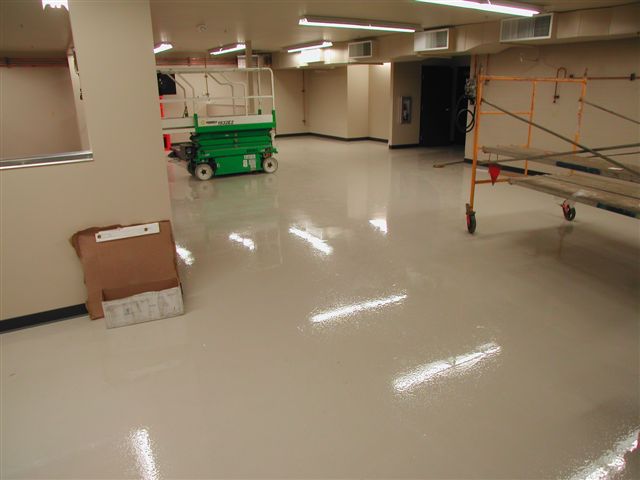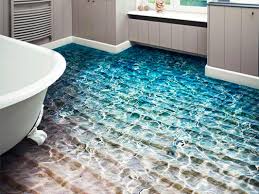How to Polish Laminate Floors
Laminate flooring, loved for its durability, price, and range of color choices, is relatively low maintenance when compared to other types of flooring. Despite this, the laminate can lose its shine over time, typically due to a buildup of dirt and grime. Unlike wood floors, you cannot wax it, and using any type of soap-based product will actually make the floors duller. A good cleaning and a product specifically meant for laminate floors will make the laminate look like new.
Thoroughly sweep the floor, removing any crumbs, dust, pet hair, or other dirt. Clean along the walls and underneath furniture, as dirt and hair tend to slide across laminate flooring; if you just get the visible areas, any slight change in the air can push dirt out from its hiding place and onto the floor, causing you to have to sweep all over again. A dusting mop or broom and dustpan are typically best for this; however, a vacuum with a hard floor setting can also do a thorough job.
Add one cup of distilled white vinegar to a gallon of warm water. Clean the floor with this mixture using a soft mop. Although there are laminate flooring cleaners on the market that are not soap based, good old-fashioned vinegar tends to produce the best results.
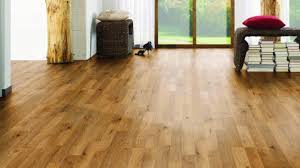
What is the difference between a real wood floor and a laminate floor?
The main difference is that laminate flooring is not made of wood it is a photograph of an particular wood species or stone pattern that is adhered to a dense particle board or high density fiberboard center core. The top layer is protected with layers of a protective finish. “Quality” laminate floors are not easily scratched or dented and they are easily installed — usually in a glue less click-together floating method. These durable floors are more resistant to stains than real wood and will not expand or contract as much with seasonal changes in humidity and temperature. Laminate flooring cannot be sanded and refinished like real wood flooring and would have to be replaced when worn out or scratched. Laminate floors are very popular in high trafficked areas like Kitchens.
Wood Flooring is real wood, durable but not quite as durable as a Quality Laminate floor. The advantage of real wood is that most can be sanded and refinished new again lasting many years. Hardwood Flooring is the only floor covering that will also increase the value of your home.
Where Can I Install A Laminate Floor In My Home?
Laminate flooring can generally be installed on, above, or below grade in the home. Many manufacturers warrant their laminate floors against moisture — so they’re good for use in kitchens and half-baths. We don’t recommend laminate floors in full baths where excessive water will be spilled on them. The best floor option for a full bath would be ceramic tile or vinyl flooring.
Can Laminate Flooring Be Installed Over Radiant Heat?
Laminate floors can be installed over radiant heating systems without a problem. The manufacturer will note in their installation instructions if there are any special procedures required. Since laminate flooring isn’t a wood product, most of them have superior heat resistance attributes.
How Is A Laminate Floor Installed?
Most laminate floors manufactured today are installed using a type of Click Lock floating method over a foam pad. There’s no adhesive, nails or staples necessary. You can also use your new laminate floor right away, there’s no waiting for anything to dry or set.
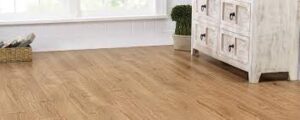
How to fix scratches
So what do you if you move a piece of furniture and it scratches your floor? You can fix scratches on laminate, but it depends on the colour and depth of the damage. Small tubes of floor colour fillers are available online, but be careful to buy a shade that matches your flooring. This solution usually works if it’s a minor scratch.
It’s a really good idea to purchase a few extra floorboards when you initially install it. These can be used to replace boards that are severely damaged over time. The products on sale change all the time, and the one you used may not be available down the line, so it’s a good idea to have a few spares packed away for a rainy day.
Some customers come to us to choose flooring for a particular room, with plans to laminate other places in the home at a later stage. Although it’s a more significant upfront investment, we recommend that they buy all the flooring they need for the future and store it until they’re ready. Trends, finishes and product lines change. You want the floors in your home to look consistent, and we can’t guarantee the same product will still be available when you return to complete the flooring in your home.
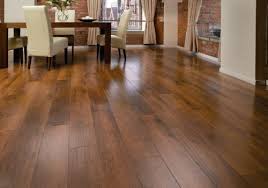
Things to Know Before Choosing Laminate Flooring
First introduced in the 1970s, laminate flooring is comprised of layers of synthetic material engineered to look like wood or stone. It quickly became a popular choice due to its durability and low price, garnering a reputation as an affordable alternative to the real thing. Today’s laminate has come a long way since it first hit the market, and its quality and appearance continues to improve, with more options than ever available now. To find out if this material is right for your budget, lifestyle, and aesthetic preferences, first consider these pros and cons of laminate flooring.
There’s an option for virtually every style.
All laminate flooring has a core layer topped by an image layer, into which a digitally enhanced photo of a natural material is embedded to mimic everything from exotic hardwoods to concrete to natural stone—a major pro. It comes in a variety of colors, lengths, and widths and, these days, texture can even be embossed to give the flooring a more realistic feel. Still, some critics insist that no matter how high-end the product, laminate simply can’t compare with the natural beauty of real wood or stone.
Laminate flooring is cheaper than wood…
Laminate flooring can run about half the price of wood flooring but, as with wood, you’ll find a range of varying quality. Some look more realistic than others, and some are less substantial in the thickness of the different layers, making them more likely to wear out sooner than a higher-quality product. You’ll typically find laminate options starting at less than $1 per square foot and topping out around $5 per square foot.
but you can’t refinish it.
Despite technological advancements in laminate flooring, it still gets its look solely from the image layer, which can’t be sanded and refinished when it starts getting worn. Wood, of course, can be revived multiple times over its lifetime, with the potential to last decades. So while the upfront price might be right for laminate, know that in the long run, wood might be a better buy. In addition, wood offers a higher return on investment in terms of your home’s resale value.
Laminate has varying degrees of durability and resilience.
Knowing that laminate can’t be refinished naturally makes you wonder how long it lasts. Fortunately, there’s a highly durable wear layer above the image layer designed to withstand foot traffic, sun fading, scratches, dents, and stains. And if a piece does get damaged, you can often replace the individual plank. But in case you can’t pull up the unsightly plank, repairing a scratch or dent in laminate flooring can be tricky at best and impossible at worst.
Most manufacturers have an AC (abrasion criteria) rating assigned to each product, which details the specific usages they’ll hold up best under. The higher the AC rating, the more durable the product will be. Keep these numbers in mind when shopping to choose a product that can tolerate the demands of your household and get the longest life possible:
- AC1—moderate residential use (like bedrooms and closets)
- AC2—general residential use (like living rooms and kitchens)
- AC3—heavy residential use or moderate commercial traffic
- AC4—general commercial traffic
- AC5—heavy commercial applications
Laminate is easy-care—with some caveats.
Excess water can cause laminate flooring to warp or stain, so aside from sweeping and vacuuming as needed, it should be cleaned carefully, generally with plain water. Use a flat mop and wring out the water before each pass. For tougher cleaning jobs, use a commercial laminate cleaner. An acetone-based solution (like nail polish remover) can help tackle tough stains.
Tips to Prevent Laminate Damage
- Never allow standing water on your laminate floor for a long time.
- Always mop up the spills as they happen.
- Avoid wet mopping laminate floor, instead, you can dry mop it for longevity.
- Always use recommended cleaning products to avoid leaving behind a sticky floor after mopping or even cause other floor damages.
- Maintain a 35-65 percent relative humidity level always. You can use dehumidifiers to maintain this relative humidity.
- It is always wise to consult wood floor professional about your laminate flooring repairs and problems
